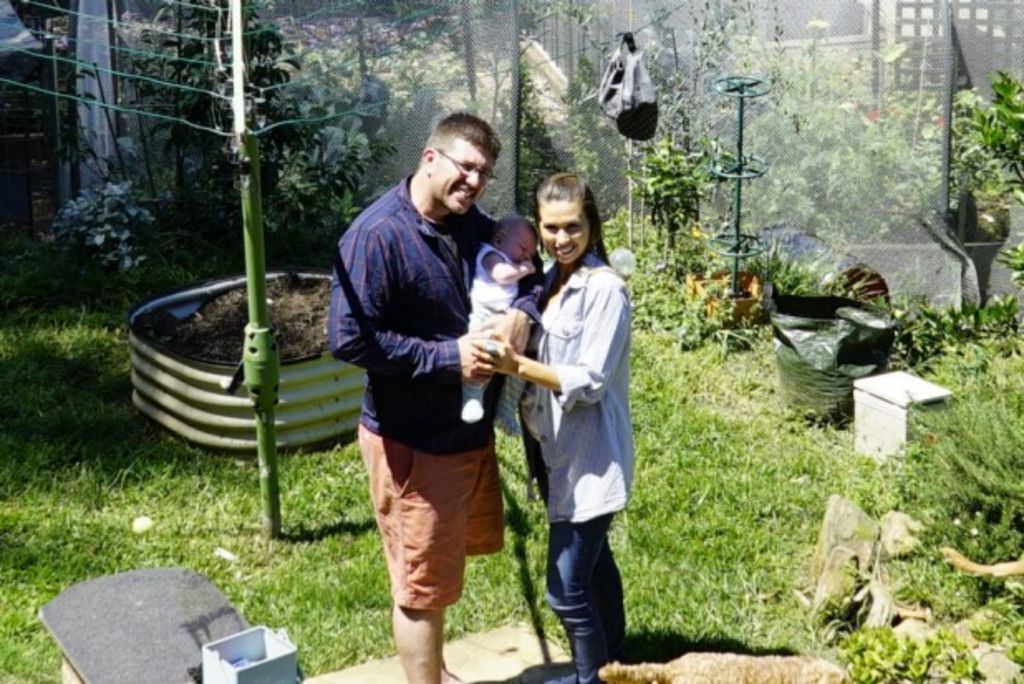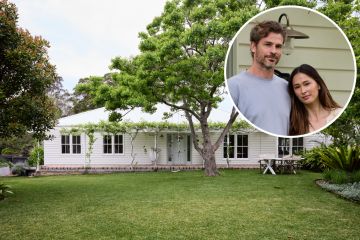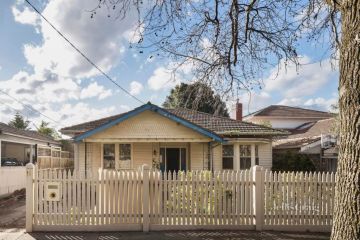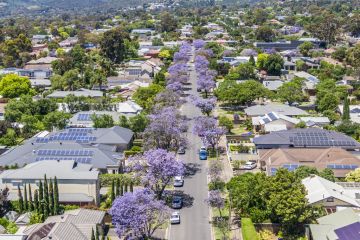Solar panels and battery systems power off-grid living as a lifestyle choice

When Glen Morris first started living off the grid (meaning not being connected to traditional, public power providers) in 1991, it wasn’t a lifestyle choice, but a necessity due to his home’s isolated location.
“I built my own renewable energy system back then when I lived in the Wollemi National Park that my partner and I bought from one of the Men at Work musicians,” Morris says.
“Many off-grid homes back then had largely DIY energy systems of very questionable quality. There were very few installers trained in remote area systems and the range of equipment was very limited.”
Responding to this gap in the market, Morris founded SolarQuip, a company that installs off-grid systems across the country.
“You don’t have to live in the bush to be off-grid … Energy self-sufficiency appeals to a wide variety of people,” Morris says.
“Off-grid for new builds in areas with only grid electricity in the street are often cheaper than connecting to the grid from day one.”
Mike, Sarah and Lennox Haydon in the backyard of their off-grid home in Seven Hills, NSW. Photo: Supplied
This scenario was the case for lawyer Peter Long and his wife Sarah, who chose to remain off-grid upon learning the setup costs of traditional power.
“We were quoted $105,000 [in 2008] to connect to the grid and to have the privilege of paying regular power bills!” Long says.
“We installed our system (but with only 16 panels at that time) for half that cost, and we’ve had no power bills in eight years. Plus, we got to put our home in the spot on the farm where we wanted it, not one dictated by the location of ugly power poles.”
The couple and their four children have since added an office and 14 panels to their home, which operate in conjunction with 24 batteries and an inverter that converts the DC power from the panels into 240 volts to supply the residence.
Greater education around off-grid living has also seen more city-based homeowners capitalising on alternative power sources.
“Off-grid living has progressed from a hippy environmentalist ‘do-it-yourself’ market, to a sleek, affordable, and high-tech industry,” says Michael Furey from HeartAu.
“Twenty years ago, you would need a room full of batteries to keep your home powered, and it would set you back around $50,000 to $60,000 to do it. These days, you can achieve the same results with a cabinet the same size as a kitchen cupboard and will cost you from $15,000 to $30,000 (or $50 to $100 a week) for most homes.”
Peter Long’s off-grid family home near Gunnedah, NSW. Photo: Supplied
Michael Mobbs has been living off the grid in his Sydney terrace home since 1996.
His $20,000 investment in a rainwater tank, sewage treatment system, solar panels and batteries saves his family up to $3000 in water and energy bills each year.
Mobbs’ lifestyle has inspired science publisher Kylie Ahern to pursue her own off-grid journey in Newtown.
“The big myth is that you have to compromise on your lifestyle,” Ahern says.
“It’s just about using existing products and engineering to use free resources better.”
Ahern attributes society’s recent interest in off-grid living to the media coverage on Tesla batteries.
“To make it more affordable and mainstream, you need these big players in the market,” Ahern says.
“It doesn’t mean they will necessarily have better products than the smaller players, but it has a huge impact on the market as a whole.”
Kylie Ahern’s Newtown home will soon operate off the grid. Photo: Simon Alekna
Business consultant Mike Haydon and his wife Sarah both lived off-grid as children, returning to this lifestyle two years ago in Seven Hills.
Haydon says one of the biggest misconceptions around off-grid living is the order taken to establish the required systems.
“The energy system was the last thing we installed,” Haydon says.
“Getting your load and home efficient first and [determining the] best use of money is in some cases the best environmental solution.”
Their family home operates using 20 thin film solar panels, a wind turbine, 15kWh of storage in nickel-iron batteries, solar powered air conditioners and energy efficient appliances.
“If you get the technology right it will pay for itself,” Haydon says.
“We calculated that we will have our investment back in 10 years and because [of] the battery and solar panels we chose will have banked $41,000 within the next 25 years on top of our investment.”
Tips for off-grid living
- Monitor your home’s energy use with an inexpensive monitoring solution from OWL Intuition, Efergy or Solar Analytics. A company can interpret this data to determine the best off-grid products for your home.
- Work with companies that offer a range of technologies and have a track record of installing batteries.
- Look for inverters that have charge controllers or battery management units already built in (usually called hybrid inverters).
- Take a tour of an off-grid home like Yabba or Sustainable House for a first hand insight into the lifestyle.
We recommend
We thought you might like
States
Capital Cities
Capital Cities - Rentals
Popular Areas
Allhomes
More







